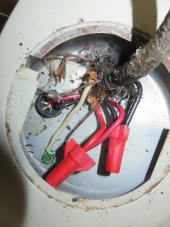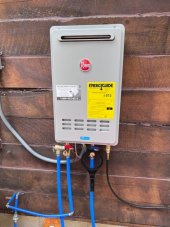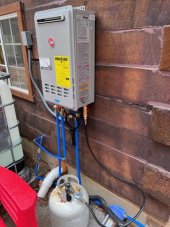wattmatters
Solar Wizard
Richwolf has his solution and will let us know how it goes.
Hot water is one of those things where there are a million options and which is suitable varies by each individual household.
It's not going to reduce energy draw (that's determined by how much hot water is consumed and the method of heating), but in their case it is a way to reduce the prospect of importing energy from the grid.
My own system treats hot water storage as a battery, heating using a smart diverter of solar PV in the daytime and having enough energy stored in the tank to last a couple of days if needed so that heating cycles can ride out a poor solar day (or several). In this way the battery capacity is used to cover the rest of the evening/night time household demand.
As others have mentioned, the usual way to avoid importing during peak tariff periods is a programmable timer relay switch + suitable contactor. Not that expensive. A hot water tank should have sufficient capacity to provide enough hot water for a day based on a once per day heat cycle. In that way it can heat when energy is cheapest (be it from solar PV, or via an off-peak tariff), and add to the home's energy storage capacity, rather than be a load which depletes it. Hot water tanks are way cheaper than batteries, so it make better sense to size a tank correctly rather than but more batteries.
Going with a lower power element (by whatever means) is helpful if using PV to heat during the day. I don't have that issues as my diverter varies the power delivered to the hot water heating element based on available excess solar PV.
Hot water is one of those things where there are a million options and which is suitable varies by each individual household.
It's not going to reduce energy draw (that's determined by how much hot water is consumed and the method of heating), but in their case it is a way to reduce the prospect of importing energy from the grid.
My own system treats hot water storage as a battery, heating using a smart diverter of solar PV in the daytime and having enough energy stored in the tank to last a couple of days if needed so that heating cycles can ride out a poor solar day (or several). In this way the battery capacity is used to cover the rest of the evening/night time household demand.
As others have mentioned, the usual way to avoid importing during peak tariff periods is a programmable timer relay switch + suitable contactor. Not that expensive. A hot water tank should have sufficient capacity to provide enough hot water for a day based on a once per day heat cycle. In that way it can heat when energy is cheapest (be it from solar PV, or via an off-peak tariff), and add to the home's energy storage capacity, rather than be a load which depletes it. Hot water tanks are way cheaper than batteries, so it make better sense to size a tank correctly rather than but more batteries.
Going with a lower power element (by whatever means) is helpful if using PV to heat during the day. I don't have that issues as my diverter varies the power delivered to the hot water heating element based on available excess solar PV.





